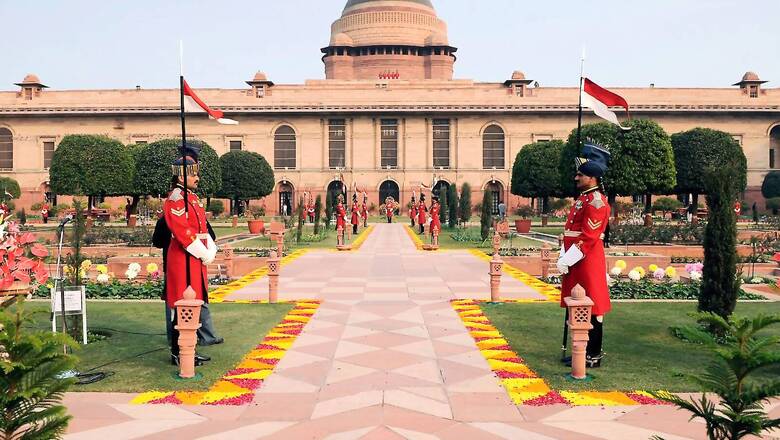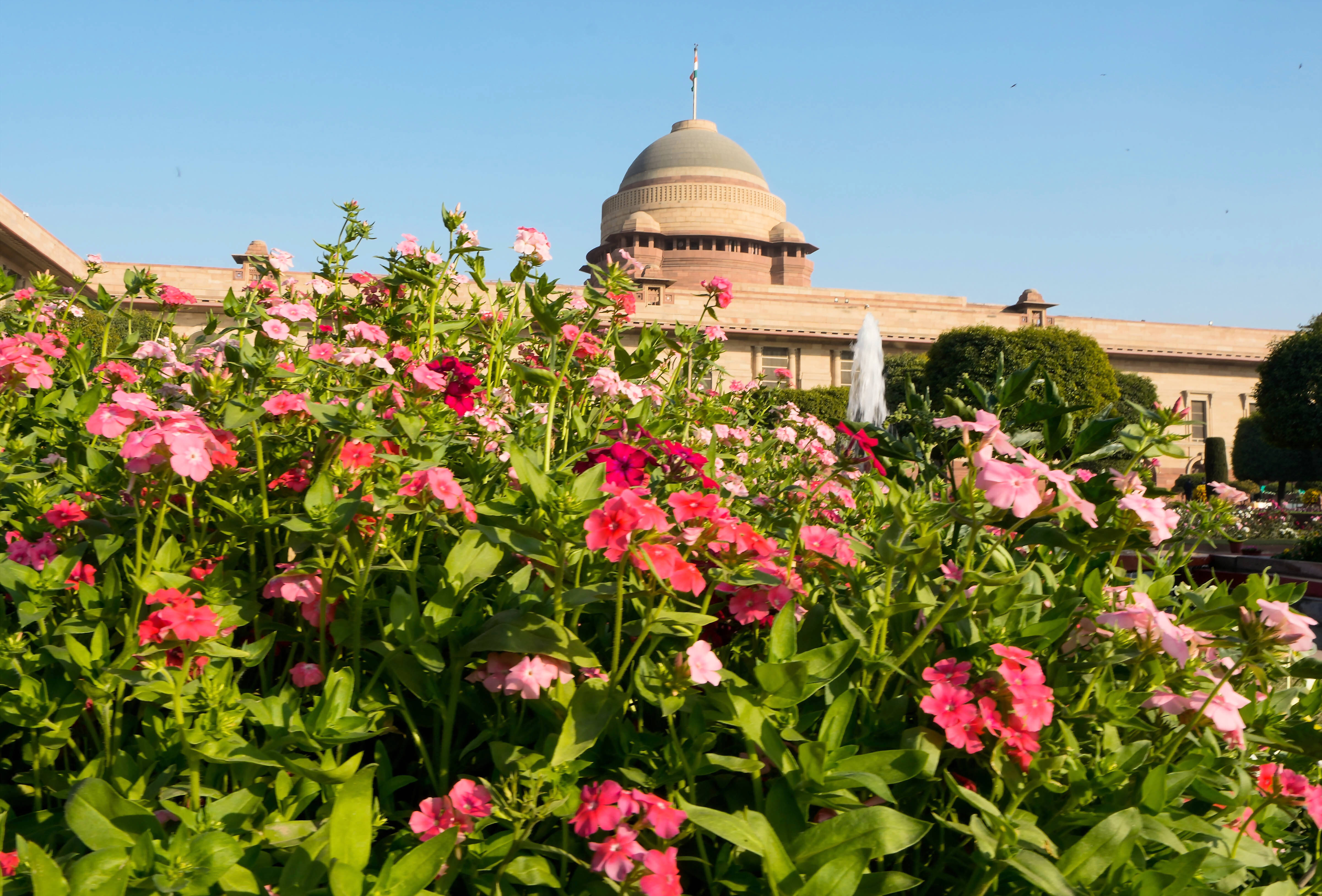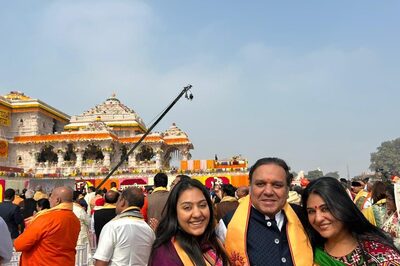
views
The famous Mughal Gardens in Rashtrapati Bhavan will now be known as ‘Amrit Udyan’. On the occasion of the celebrations of 75 years of Independence as ‘Azadi ka Amrit Mahotsav’, President Droupadi Murmu has given a common name to the Rashtrapati Bhavan gardens as ‘Amrit Udyan’.
The decision is yet another move to shed India’s colonial baggage after Rajpath was renamed as ‘Kartavya Path’.
Rashtrapati Bhavan is home to a rich variety of gardens. Originally, they included East Lawn, Central Lawn, Long Garden and Circular Garden. During the term of former Presidents Dr. A.P.J. Abdul Kalam and Shri Ram Nath Kovind, more gardens were developed, namely, Herbal-I, Herbal-II, Tactile Garden, Bonsai Garden and Arogya Vanam.
“Rashtrapati Bhavan gardens will now be collectively known as ‘Amrit Udyan’. The gardens are being opened by the President from tomorrow. It will remain open for the public from January 31 to March 26,” said Navika Gupta, Deputy Press Secretary to President.
President Droupadi Murmu will grace the opening of the Amrit Udyan tomorrow. https://t.co/4rXOMlZXA3 pic.twitter.com/7WhgilMoWW— President of India (@rashtrapatibhvn) January 28, 2023
Udyan Utsav 2023 – Timings & Opening Days
President Droupadi Murmu will grace the opening of the Gardens of Rashtrapati Bhavan — Udyan Utsav 2023 — on January 29. This time the Gardens (Herbal Garden, Bonsai Garden, Central Lawn, Long Garden and Circular Garden) will be open for about two months. The Gardens will open for general public on January 31, 2023 and will remain open till March 26, 2023 (except on Mondays which are maintenance days and on March 8 on account of Holi).
From March 28 to 31, the gardens will be open for special categories– for farmers on March 28, for differently abled persons on March 29, for personnel of Defence Forces, Paramilitary Forces and Police on March 30, and for women including tribal women’s SHGs on March 31.
Another step towards making Rashtrapati Bhavan accessible to more and more people is through increase in capacity of each hourly slot. The visitors will be allowed to visit in six hourly slots between 10 am and 4 pm. The capacity for the two forenoon slots (10 am to 12 noon) will be 7,500 visitors during weekdays and 10,000 visitors in each slot on weekends. The capacity for the four afternoon slots (12 noon to 4 pm) will be 5,000 visitors in each slot during weekdays and 7,500 visitors on weekends.

What’s Special in This Year’s Udyan Utsav?
In this year’s Udyan Utsav, among several other attractions, visitors will be able to see specially cultivated tulips of 12 unique varieties which are expected to bloom in phases. People can scan QR code placed in the Gardens to get more information about any particular flower, plant or tree during the visit.
How to Book Tickets for ‘Amrit Udyan’?
People can book their slot well in advance through online booking. Booking can be made on https://rashtrapatisachivalaya.gov.in or https://rb.nic.in/rbvisit/visit_plan.aspx.
Walk-in visitors can also get entry to the Gardens. However, they will have to register themselves at the facilitation counters as well as at the Self Service Kiosk near Gate No. 12 of Rashtrapati Bhavan. It is advisable to book a slot online in advance to avoid rush and save time.
Entry and exit for all visitors will be from Gate No. 35 of the President’s Estate, close to where North Avenue meets Rashtrapati Bhavan.
Visitors are requested not to bring any briefcases, cameras, radios/transistors, boxes, umbrellas, eatables etc inside the Gardens. They can carry mobile phones, electronic keys, purse/handbags, water bottles and milk bottles for infants. Provision for drinking water, toilets, and first aid/medical facilities will be made at various places along the public route.
History of Mughal Gardens
The garden, which adorn Rashtrapati Bhavan, is inspired by the Mughal Gardens of Jammu and Kashmir, the gardens around the Taj Mahal and even miniature paintings of India and Persia.
British architect Sir Edwin Lutyens, who has been credited for several architectural design and buildings in New Delhi during the British empire, had finalized the designs of the Amrit Udyan around 1917. However, plantings were done a decade year.
The occupants of Rashtrapati Bhavan have ensured that the open space of the Estate is utilized in an efficient manner. C Rajagopalachari, India’s first Governor-General who was also the first Indian resident of Rashtrapati Bhavan, cultivated wheat in a portion of the grounds as a gesture to address the problem of shortage of food in the country. A P J Abdul Kalam, during his tenure, had contributed by making Herbal Gardens, Tactile Gardens for the visually handicapped, Musical gardens, Bio-Fuel Park, Spiritual and Nutrition garden and more. Pratibha Patil is known for her contribution to the Bonsai Garden and nature trails in Rashtrapati Bhavan along with Project Roshini which aimed at making the President’s House an environment friendly habitat by efficient use of resources and use of renewable energy sources.
Why is Mughal Gardens Famous?
The gardens boasts of growing 159 celebrated varieties of roses which blossom primarily in the month of February and March. They include, Adora, Mrinalini, Taj Mahal, Eiffel Tower, Modern Art, Scentimental, Oklahoma (also called black rose), Belami, Black Lady, Paradise, Blue Moon and Lady X. It also include roses named after people of national and international fame such as Mother Teresa, Raja Ram Mohan Roy, Lincoln, John F Kennedy, Jawahar, Queen Elizabeth, Christian Dior amongst others. Arjun and Bhim, from the Mahabharata, also find place in the presidential palace, according to Rashtrapati Bhavan.
Apart from roses, tulips, Asiatic lilies, daffodils, hyacinth and over seventy varieties of seasonal flowers including exotic bulbous and winter flowering plants make the gardens look beautiful. 60 of the 101 known types of bougainvilleas are found here. Edging and flowering of flower beds is done with alyssum, daisy, pansy etc. The grass that covers the garden is the doob grass, which was originally brought from Calcutta (now Kolkata) when the Mughal Gardens was being planted. The Gardens has almost 50 varieties of trees, shrubs and vines including Moulsiri tree, Golden Rain tree, flower bearing Torch Tree and many more. At present, over three hundred permanent and casual employees are deployed for the development and maintenance of the gardens of Rashtrapati Bhavan.
Read all the Latest India News here




















Comments
0 comment